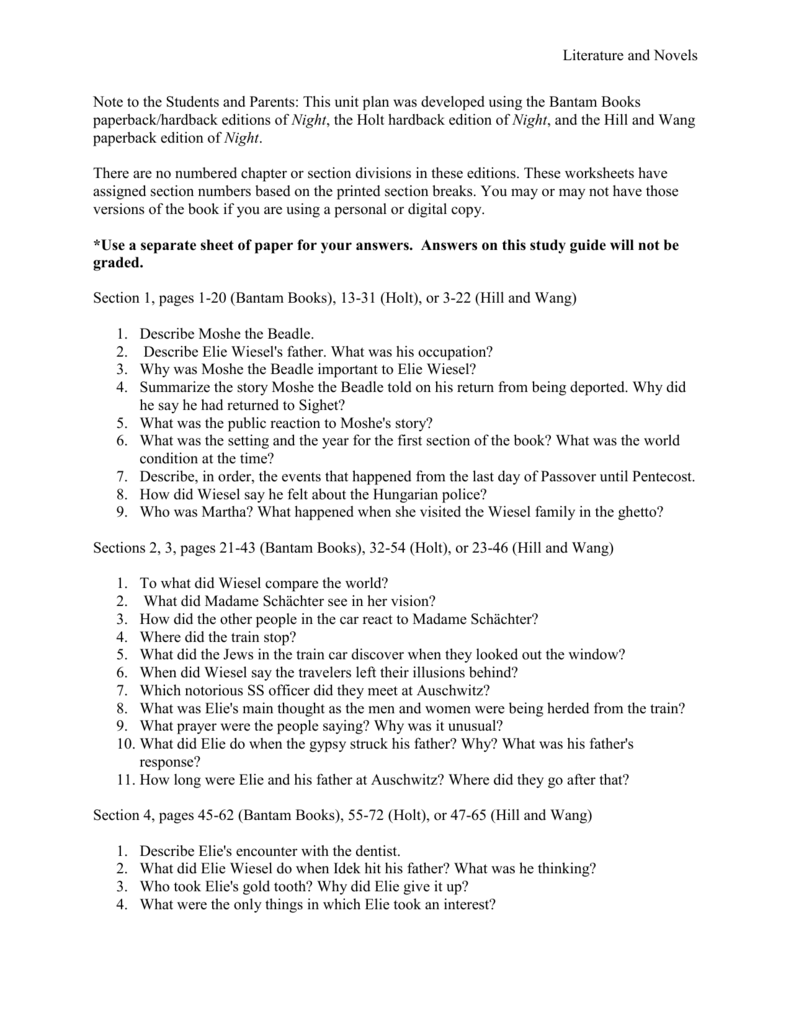
No other individual is so identified with the Holocaust-its memory and its prevention-as Wiesel.

The metaphorical night only gets darker as Eliezer struggles to survive in the brutality and degradation of the camps.

Within a matter of paragraphs, officers of the Nazi SS corps have arrived and the family is broken up and sent to Birkenau. That was only the beginning, the dusk of the coming night. All the people presumed deported were shot. Some days later, he makes it back to town and tells them what happened. The fascists come to power in Romania and foreign Jews are deported and Moshe with them. Moshe the Beadle indulges the boy until the reality of World War II reaches them. His father, however, says he must master the Talmud before he can move on to the mystical side of the Jewish faith. There we meet a devote young boy named Eliezer who is so fascinated by his own culture and religion that he wishes to study Jewish cabbala. Night begins in 1941 in a Hasidic Community in the town of Sighet, Transylvania. For Wiesel, Night began a brilliant writing career.

Night made no claim on innocence but created an aesthetic of the Holocaust to force people to face the horrible event and, hopefully, break the general silence surrounding that hell. He had a hard time finding an audience, however, in a world that preferred the 1947 Diary of Young Girl written by Anne Frank. Wiesel's novel revealed the Holocaust in stark, evocative, detail. That cathartic story was reworked over two years and became the slim 1958 novella La Nuit which became Night in 1960. With the encouragement of Francois Mauriac, Eliezer Wiesel broke his silence on the horror of the Holocaust to produce an 800 page memoir entitled, Un di Velt Hot Geshvign, in 1956.


 0 kommentar(er)
0 kommentar(er)
